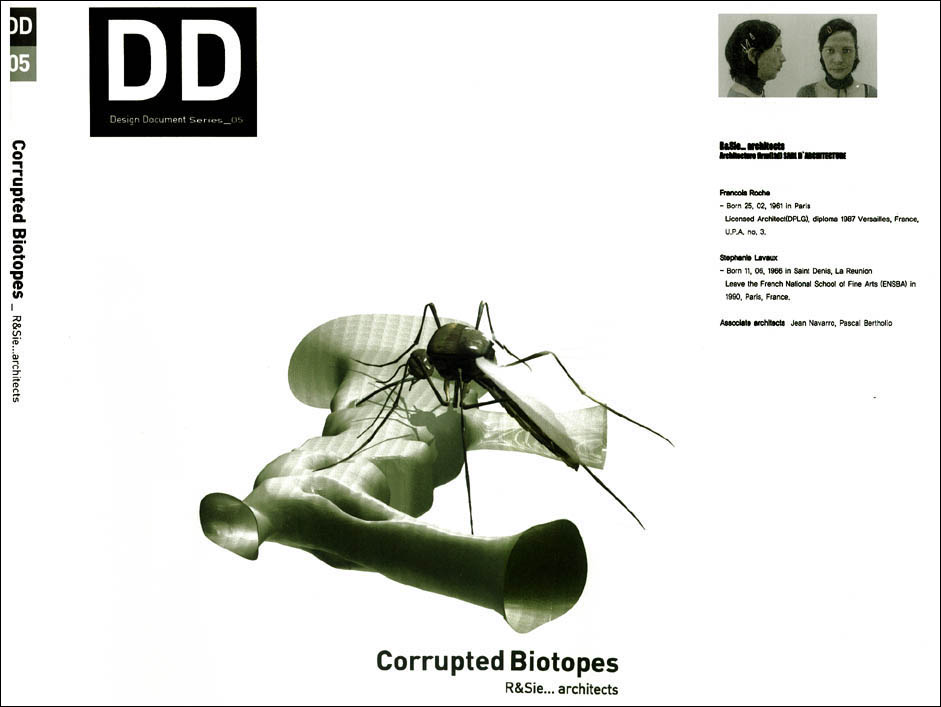 Programming scenarios: R&Sie(n)...
Programming scenarios: R&Sie(n)...In Issue 8 of Praxis, the work of Francois Roche and Stephanie Lavaux is unraveled via their redefining architectural programming at the micro and macro scales thus to insturmentalizing the material processing of place. Their understanding of program synthesizes ecology, biology, and built form as both critique and catalyst. They use an evolving definition for program in architecture.
What is programming:
Architecture- a design brief of space requirements or activities
computer science- a sequence of coded instructions input into a mechanism that enable it to perform in a specified manner
biology- a sequence of coded instructions (as genes or behavioral responses) embedded with in the organism itself- integral to the building's life processes in relation to its biotope
By substituting the words biotope and scenario for site and design, R&Sie(n)... mess with the materiologies of the hyper-local. They code the intelligent material, the "genius materiae", the material of place, they spark a process to produces unanticipated and constantly evolving effects.
 "Their uncompromising views and creations are highly experimental. Such elements as metamorphosis, fluid ecology, clones, biorobotics and advanced medicine play an important part. Their 'architecture non standard' is not static, but lively and amorphous. Their visionary exhibition 'I've heard about (a flat, fat, growing urban experiment)' shows an urban planning Utopia comprising a self-engendered,
"Their uncompromising views and creations are highly experimental. Such elements as metamorphosis, fluid ecology, clones, biorobotics and advanced medicine play an important part. Their 'architecture non standard' is not static, but lively and amorphous. Their visionary exhibition 'I've heard about (a flat, fat, growing urban experiment)' shows an urban planning Utopia comprising a self-engendered,independently growing biostructure." _
The article pin points out their project : Dusty Relief, a museum of contemporary art in Bangkok. The proposal exploits its context, using the highly toxic urban atmosphere. The dust, soot, and smog are now an integral part of the Bangkok's biotope and as an indigenous material that's modified the city's climate. The proposal juxtaposes the geopolitical architectural ambitions of a museum with the highly local site chemical specificity of its toxic micro-ecology. It produces a duality of co-existence with the pristine white-walled galleries to the polluted atmosphere. (WASTE=FOOD according to McDonough, yet this takes it to a new level. Less chic band aide, more reaction.) This building works because it announces to society, "yes, we human
How does this work? The building has an electrostatically charged mesh cladding designed ot attract the fine particles in the air. As time passes, the dust continues to accumulate with carbon monoxide particles precipitating on the amorphous ectrostatic shell, augmenting the evolving particle landscape. Unlike most "architecture", the building attracts versus repel, absorbing and "feeding" off of its environment.
R&Sie(n)... set up the system for change and evolution to occur, not prescribing a fundamental construction. They are playing off of an organic rule set, not fighting nature but incorporating it, exposing it, and enhancing it.
We are going this way.



